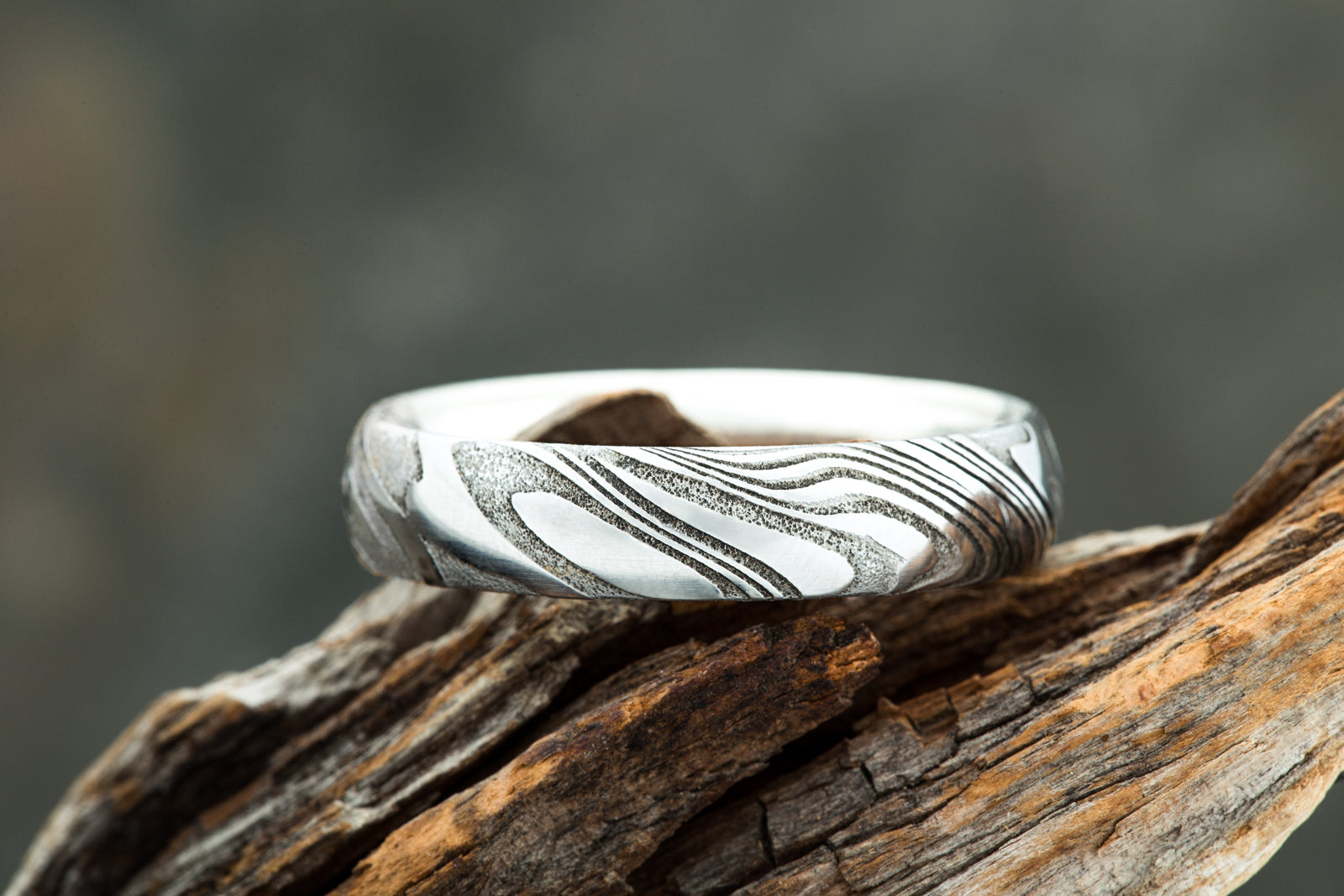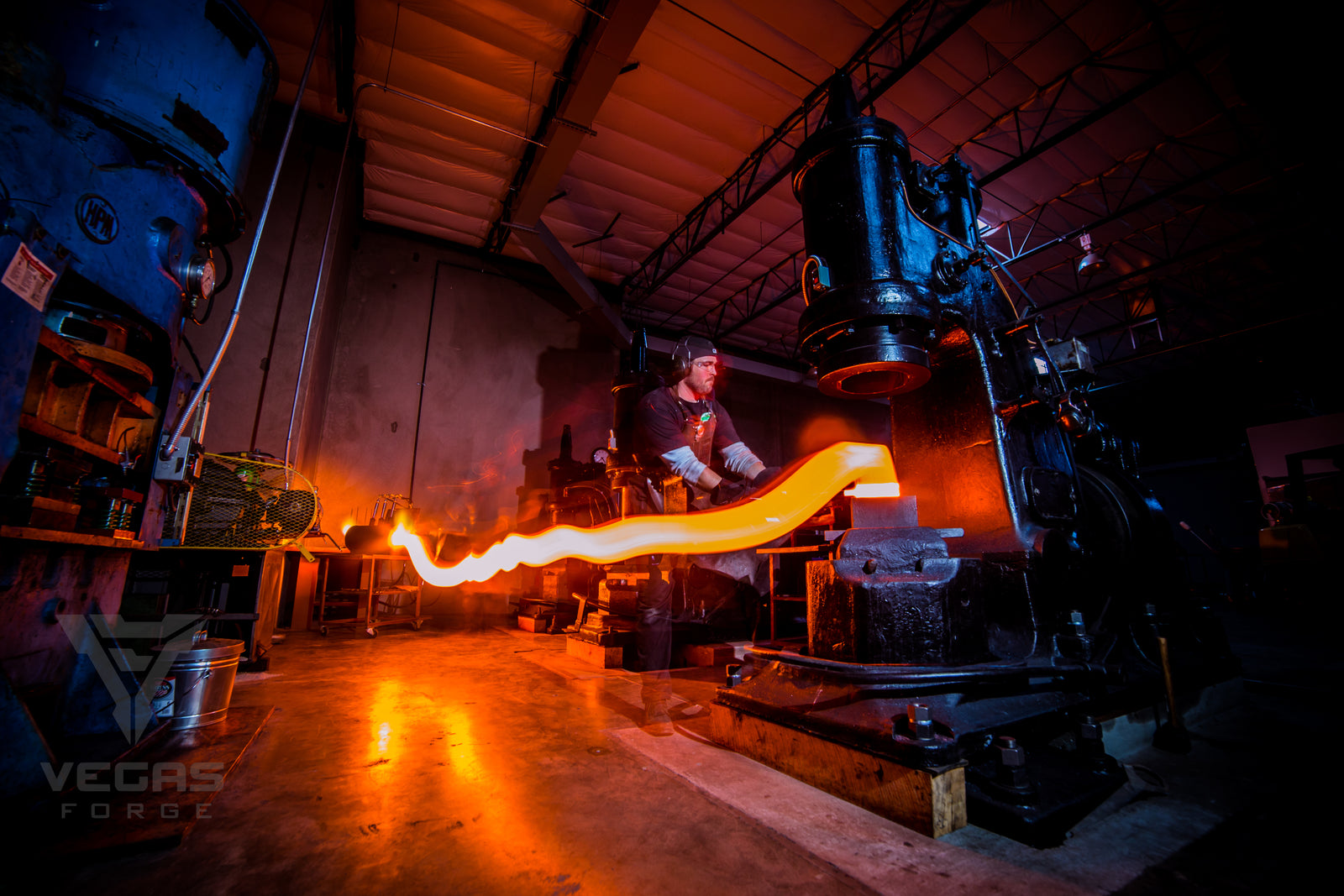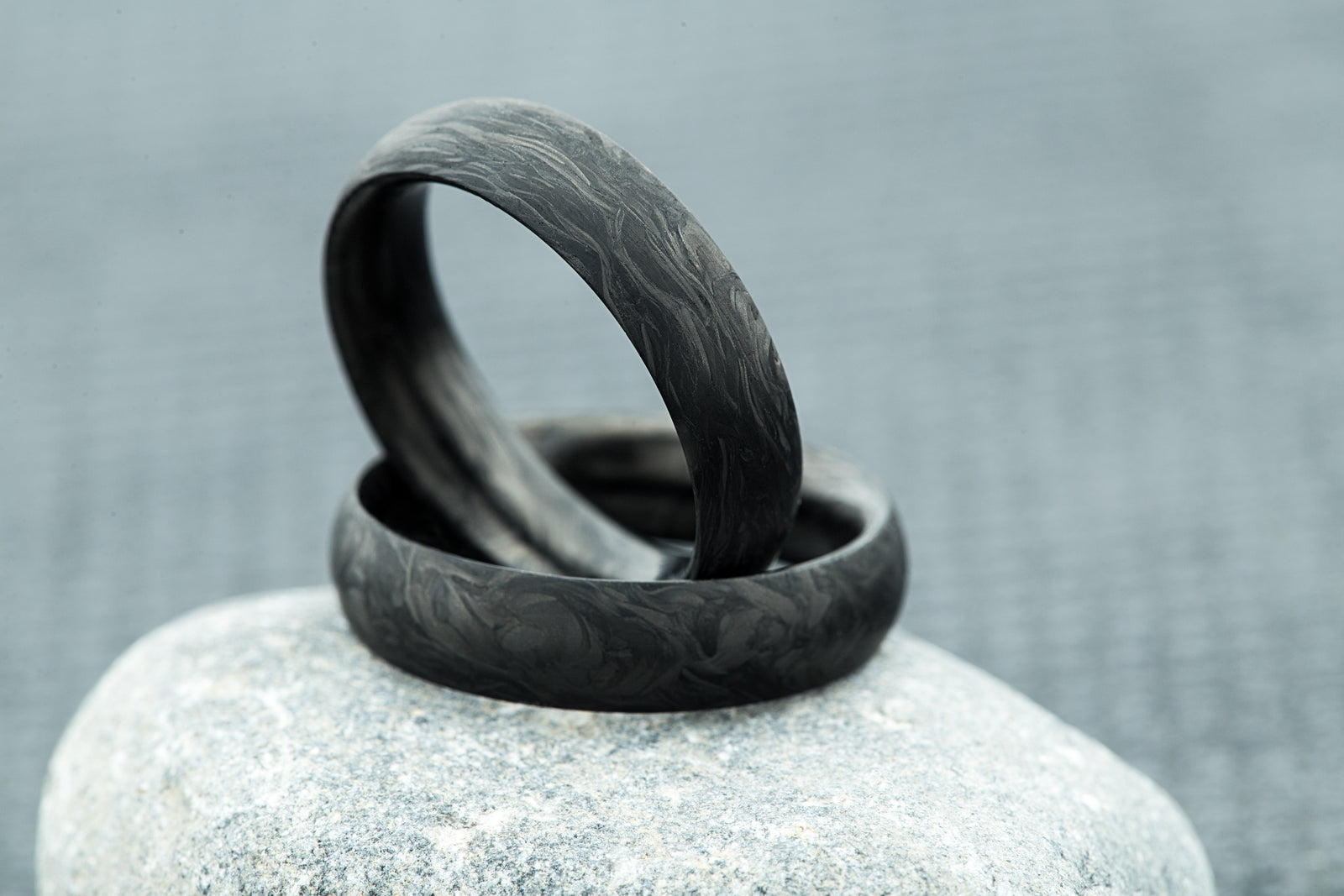Whenever John and I go to the Metropolitan Museum of art, one of our first stops is always the ancient Samurai swords to look at their beautiful Damascus steel blades. At first the material look like regular metal, but if you look closely, you'll see subtle swirling lines flowing across the surface, a tell-tale sign that this material was carefully crafted for a perfect balance of strength and flexibility.
Sword makers want a blade that is both rigid enough to withstand combat and keep a sharp edge, and flexible enough to absorb the shock of large impacts. To strike that balance, metalsmiths in Damascus, Syria, around 1,000 AD started combining two steels together—one rigid and the other more flexible—to create what could be considered the first high-performance material. It's this process of heating, folding, and hammering the steels together that create the material's unique patterns.
We get our Damascus steels from two small, custom forges in the United States. When a Damascus ring is ordered, the material is cut here at our Brooklyn workshop, and the piece is then polished and given an acid bath. As the acid eats away at one of the steels faster than the other, the ring's unique pattern is revealed. We then give it a neutralizing bath, polish it again, and fit it with its forged carbon fiber, silver, or gold interior.
We started designing with Damascus steel about five years ago, and the Woodgrain rings have long been the most popular. Here in the shop, we've had several theories over the years of why this design has been such a particular favorite, but I think the secret is summed up in the name: its patterns really do subtly look like wood, making it striking but also kind of calming. It's not only beautiful but it also takes us back to nature, and that's always a good thing.
Claire




